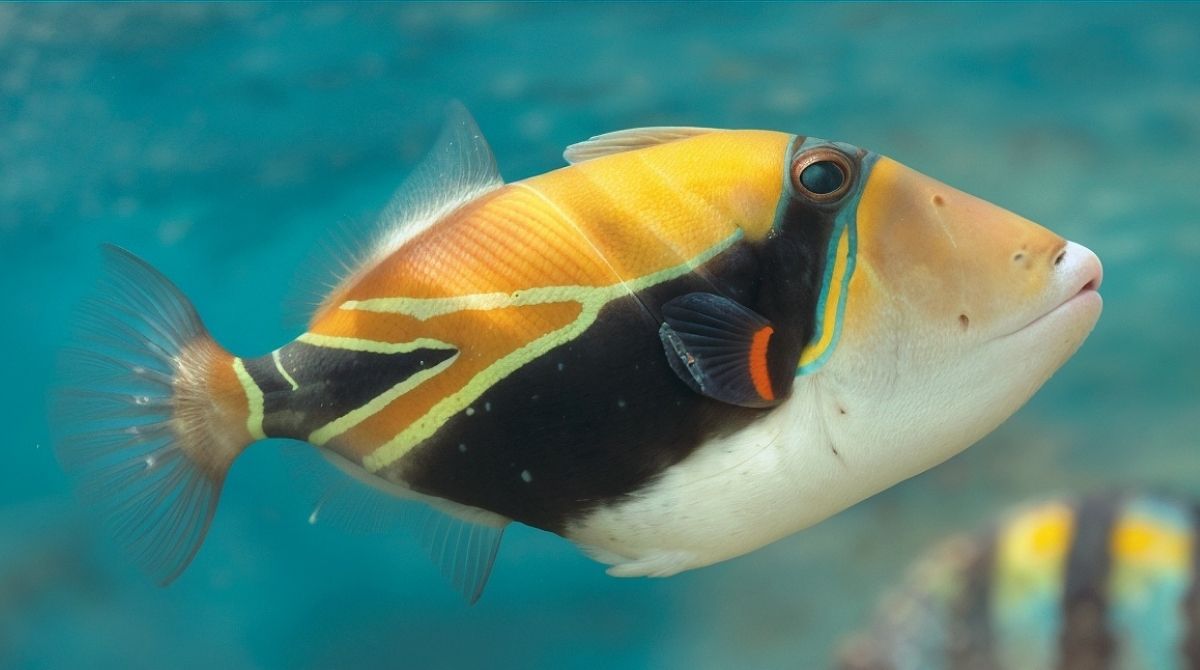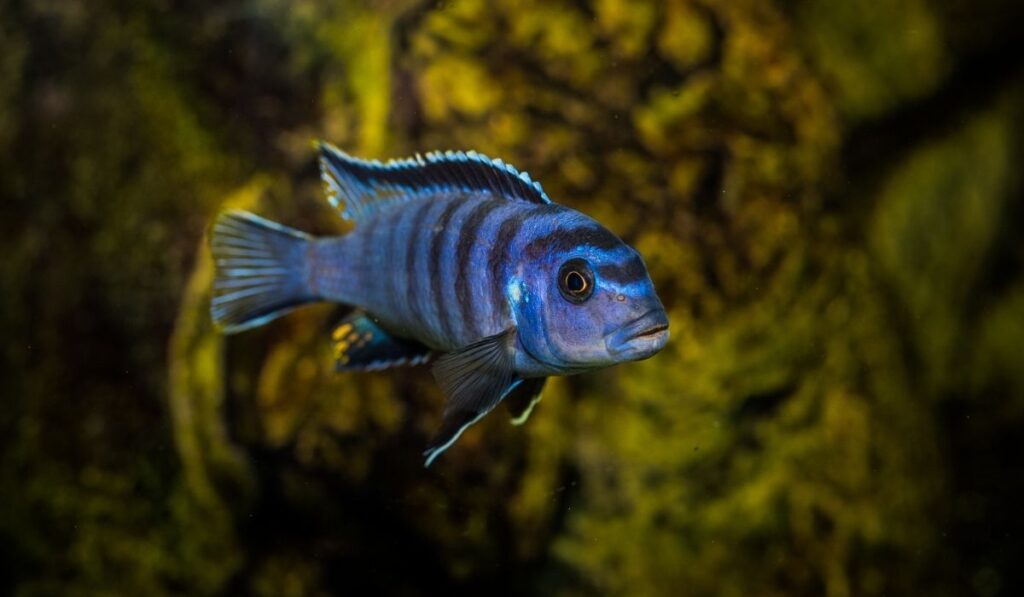Imagine that you are snorkeling in the crystal-clear waters of Hawaii. Suddenly, a vibrant, strange-shaped fish darts past you. Bold stripes. A snout like a pig. And then it hunts. Yes, you’ve just met the humuhumunukunukuāpuaʻa, the state fish of Hawaii! This little yet fearless reef warrior is a true marvel of the ocean. But why does this fish have such a long name? What makes it so special? And how did it become a Hawaiian legend?
Scientific Classification
| Category | Classification |
|---|---|
| Kingdom | Animalia |
| Phylum | Chordata |
| Class | Mammalia |
| Order | Rodentia |
| Family | Caviidae |
| Genus | Cavia |
| Species | Cavia porcellus |
Locations
Hawaii (USA)

Conservation Status
Least Concern
What is the Hawaii State Fish?
The official state fish of Hawaii is the humuhumunukunukuāpuaʻa (Rhinecanthus rectangulus), which people also call the reef triggerfish. The Hawaiian name for the state fish means “triggerfish with a pig-like snout.” This fish’s distinct, colorful patterns make it identifiable while it thrives within the coral reefs near the Hawaiian Islands. Hawaii recognized this species as its official state fish in 1985 and reaffirmed this designation in 2006.
Hawaii State Fish Physical Characteristics
| Characteristic | Details |
|---|---|
| Size and Weight | Up to 18 inches (46 cm) in Length Up to 4 pounds (1.8 kg) |
| Coat Color | black, yellow, and grayish |
| Eye Band | Dark band running across the eyes |
| Cheek Stripe | Bold line from dorsal to pectoral fin |
| Lips | Distinctive blue, “blue mustache” |
| Teeth | blue-tinted, sharp, and continuously growing teeth designed to crush hard shells. | life cycle | Egg, Larvae, Fry, Juvenile, and Adult |
Habitat
The reef triggerfish is the state fish of Hawaii and lives in shallow reef structures, lagoons, and coastal waters. This species is found in tropical coral reefs throughout the Indo-Pacific, including Hawaii. During the day, it lives in crevices and feeds on algae, small invertebrates, and crustaceans.
Behavior and Diet
Reef habitats are where Hawaii’s state fish live, and it gets confrontational if it feels like it’s running out of space. The fish has a feeding behavior where it blows water to uncover prey buried in the sand, and its diet consists mainly of algae and small invertebrates. It has a spine on its dorsal fin, which it uses to lock itself into crevices when threatened. It can also turn color to camouflage itself.
Grunting
The state of the air, especially when there is danger, produces severe sounds. These help to communicate noise crises and overcome predators. Voices come from its floating bladder, often heard during regional disputes or defensive behavior.
Normal body temperature and Lifespan
Hawaii’s state fish body temperature is based on environmental temperatures that vary between 77°F and 80°F (25°C to 27°C). Research indicates that triggerfish species can reach 20 years of age in captivity, although complete lifespan information is still lacking.
How to pronounce hawaii state fish
how The Hawaiian state fish, humuhumunukunukuāpuaʻa, is pronounced as:
hoo-moo-hoo-moo-noo-koo-noo-koo-ah-poo-ah-ah
Here’s how to say it step by step:
- hoo-moo hoo-moo (like “who-moo who-moo”)
- noo-koo noo-koo (like “new-coo new-coo”)
- ah-poo-ah-ah (like “ah-poo ah-ah”)
15 Incredible Facts about Hawaii’s state fish
- Name Meaning: The name “humuhumunukunukuāpuaʻa” means triggerfish in Hawaiian, with a snout like a pig.
- Habitat Range: The species can be found on coral reefs throughout the Indo-Pacific and within the Hawaiian Islands.
- Diet: This species feeds on a wide range of food, including algae, crustaceans, mollusks, and echinoderms.
- Feeding Technique: The species uses its powerful jaws and sharp teeth to break open the hard shells of its prey.
- Color Change Ability: This species can change its color to camouflage or show emotional responses.
- Territorial Behavior: It is well known that this species is territorial, particularly when it is breeding.
- Unique Defense Mechanism: It has a strong dorsal spine that deploys to protect the fish from predators.
- Sound Production: When threatened or picked up, it makes a noise that sounds like a pig’s grunt.
- Cultural Significance: This fish is mentioned in Hawaiian myths and songs, where it is described as a protector.
- Egg Protection: The male fish is very aggressive in protecting the nest until the eggs hatch.
- Swimming Style: It uses its dorsal and anal fins to swim and can fit into small spaces.
- Aquarium Presence: It is well-loved by aquarium hobbyists, but because it is a territorial fish, it needs special care.
- Role in Ecosystem: It helps regulate the numbers of sea urchins and other invertebrates, thus maintaining balance on the reef.
- Historical Use: These fish were dried by early Hawaiians and used as fuel for their fires.
- Pig-Like Snout: The shape of its snout is like that of a pig, which gives it its name in Hawaiian.
Conclusion
Grunting like a pig, this grunting fish not only changes colors but also locks itself into the rocks; the humuhumunukunukuāpuaʻa is Hawaii’s state fish and an underwater warrior. Overflowing with motivation and capable of unfathomable love, respected in ancient Hawaiian lore, these fish also, if put in a corner, will fight hard and aggressively to defend their home in the reef.
But again, here comes the real question: why did the Hawaiians believe this fish had mystical powers? And which secrets does this little predator still hide there beneath the waves? One thing is sure: Keep your eyes open on your next trip to Hawaii. You will never forget the moment you sighted this delicate fish.
Frequently Asked Questions (FAQs)
What Makes It Special?
kunukuāpuaʻa highly grunts like a pig changes colors under threat, and vigorously defends its reef habitat! With that beautiful name, several fangs, and a cultural hue, it sticks lastingly into memory!
How does the humuhumunukunukuāpuaʻa protect itself from predators?
This fish has several defense mechanisms, including:
- A sharp dorsal spine that locks into place, making it hard for predators to pull it from crevices.
- Color-changing abilities to blend into its surroundings.
- A loud grunting sound, similar to a pig, to deter threats.
What is a humuhumunukunukuāpuaʻa’s diet?
It eats algae, small invertebrates, crustaceans, mollusks, and echinoderms, using its powerful jaws to crush the shells.
Can I keep a humuhumunukunukuāpuaʻa in my aquarium?
Yeah, just be sure it’s substantial in size and take care when handling it, as this fish is highly territorial and will fight with others.



